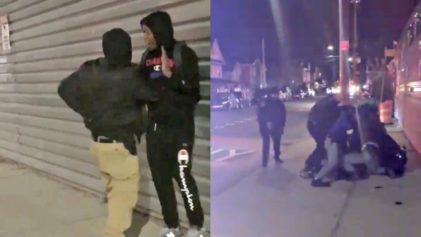The U.S. Justice Department has given District Court Judge Shira Scheindlin a powerful option in her deliberations into the constitutionality of the NYPD’s stop-and-frisk policy, by stating that she can impose an outside monitor if she finds the department has violated the law.
The Justice Department’s civil rights division say they are not taking a position on whether the city’s stop-and-frisk practices violate the Fourth Amendment’s bar on unreasonable searches or the Fourteenth Amendment’s guarantee of equal protection under the law. But they are saying if the judge so desires she can use the Justice Department to monitor the conduct of the New York Police Department. Scheindlin is expected to issue her decision next month.
“Where there exist a pattern or practice of police misconduct, a court has broad discretion to enter injunctive relief aimed at remedying that conduct,” the Justice Department filing says.
City lawyers have argued that the department already has an internal affairs bureau and a civilian complaint review board, so it is not in need of additional oversight. But the Justice Department counters in its filing that those entities are poorly equipped to enforce stricter supervision of the department’s stop-and-frisk practices.
“A court-appointed monitor in this case would help the court ensure that, if any pattern or practice is found to exist, it is effectively and substantially remedied,” the Justice Department filing says.
John McCarthy, a spokesman for Mayor Michael Bloomberg, said it was the NYPD’s “exceptional professionalism” that made New York the safest big city in the nation.
“Their work to cut crime to record lows and take illegal guns off the street has saved thousands of lives, and our administration will continue giving them the support and tools they need to do their jobs and keep New Yorkers safe,” spokesman John McCarthy said.
But Scheindlin emphasized during trial that it was not the effectiveness of the NYPD’s policies that was on trial.
“I’ve repeatedly said that one issue that is not present here is the effectiveness of this policy, because that’s not for this court,” Scheindlin said during the trial, according to a story in The New Yorker. “This court is only here to judge the constitutionality…We could stop giving Miranda warnings. That would probably be exciting for reducing crimes. But we don’t allow that. So there are a number of things that might reduce crime, but they’re unconstitutional. This court is only concerned with the Constitution, not with the effectiveness of the policy.”
After 10 weeks of testimony from dozens of witnesses, most observers expect Scheindlin to rule against the city. Scheindlin is seen by many as an enemy of the police department because she has ruled against it so often in the past.
She has already ruled in a separate case in January that the stop-and-frisk tactic used by police in the Bronx to patrol the property of private landlords — at the invitation of the landlords — was a violation of the constitutional rights of Bronx residents.
Because of the January ruling and Scheindlin’s history, city lawyers clearly expect they will be on the losing end of this stop-and-frisk challenge.
During her questioning of attorneys, Scheindlin raised the possibility of ordering the NYPD to make officers wear cameras to help dispel discrepancies between encounters.
Many supporters of stop-and-frisk, such as Bloomberg, have claimed that the tactic is responsible for the unprecedented drop in crime in the city in recent years. But critics point out that crime continues to drop even as police have drastically reduced the use of stop-and-frisk.


